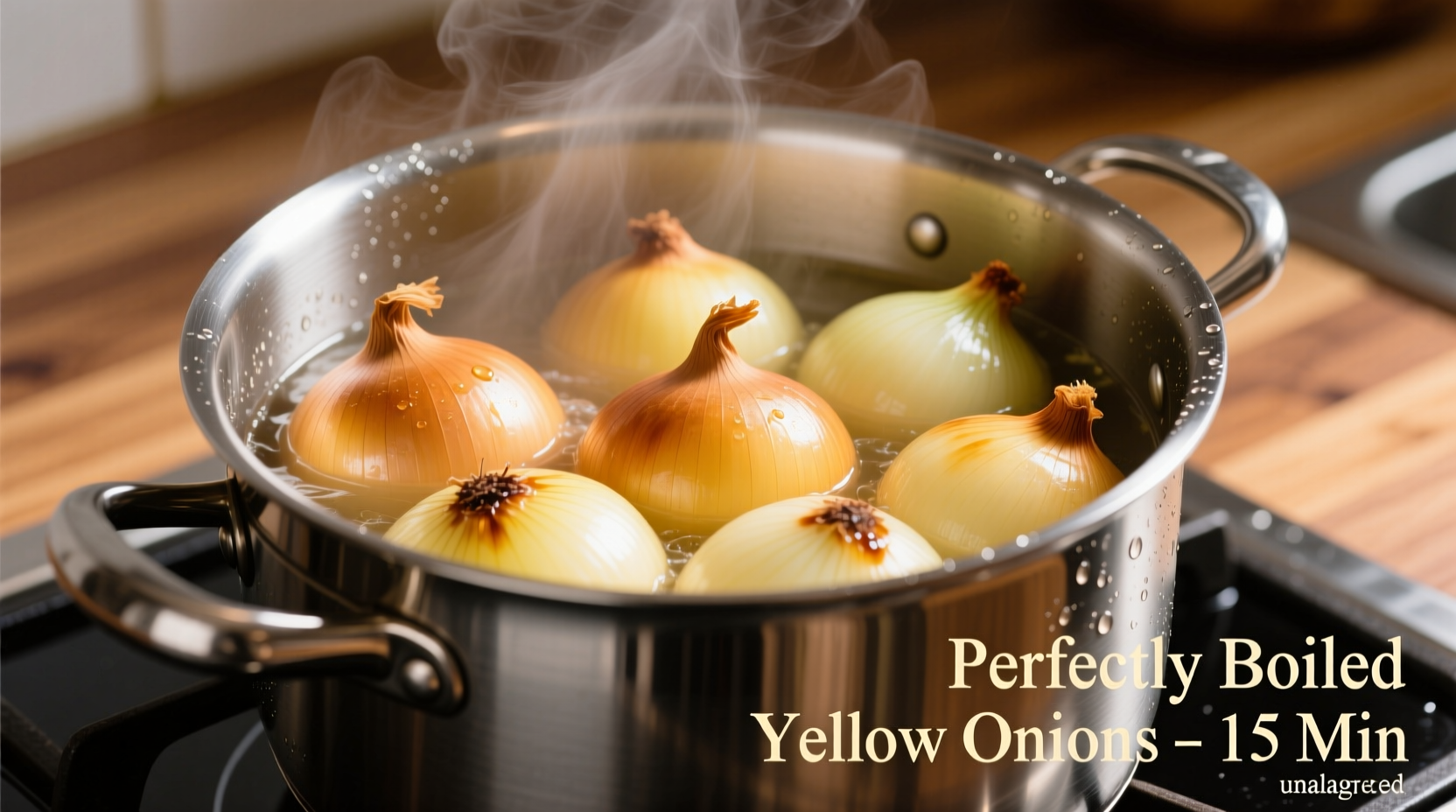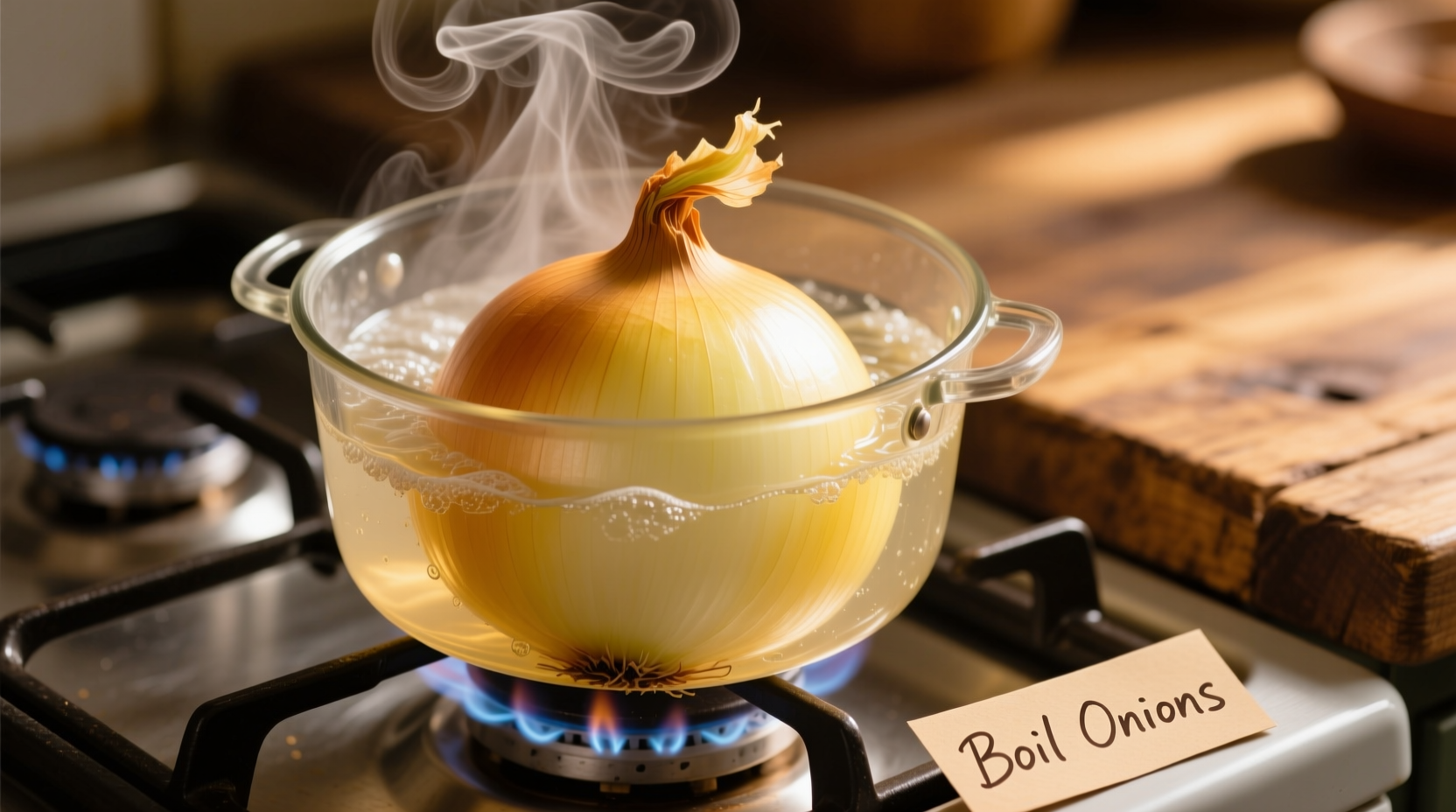Ever wondered why your French onion soup lacks depth or your pickled onions turn out too harsh? The secret often lies in proper onion preparation. Boiling onions is one of the most misunderstood yet valuable techniques in culinary arts, transforming this pungent allium into a subtle, sweet foundation for countless dishes. Unlike sautéing or roasting, boiling extracts harsh compounds while preserving the onion's structural integrity—essential for recipes where texture matters.
The Science Behind Boiling Onions
When onions hit boiling water, their cellular structure begins changing immediately. According to food science research from the USDA Agricultural Research Service, the heat breaks down sulfur compounds responsible for raw onion's sharp bite, while starches begin to swell. This process follows a precise timeline:
| Time | Physical Change | Flavor Development |
|---|---|---|
| 0-3 minutes | Outer layers soften | Sharpness begins reducing |
| 5-8 minutes | Translucent appearance | Mild sweetness emerges |
| 10-15 minutes | Fully tender but intact | Optimal balance of flavor |
| 15+ minutes | Structural breakdown | Flavor dissipates into water |
This transformation explains why boiling works better than other methods for certain applications. While caramelizing develops complex sweetness through Maillard reactions, boiling preserves the onion's shape while mellowing its flavor—perfect for dishes like blanquette de veau or Scandinavian pickled onions where distinct pieces matter.
Step-by-Step Perfect Onion Boiling
Selection and Preparation
Not all onions respond equally to boiling. Yellow onions provide the best balance of flavor and structure, while sweet varieties like Vidalias may become too delicate. For whole onions (ideal for pickling), choose uniform 2-inch diameter bulbs. For soups and stews, medium dice works best—smaller pieces cook too quickly and lose shape.
Professional chefs at the Culinary Institute of America recommend the "ice bath shock" technique: after peeling, submerge onions in ice water for 10 minutes before boiling. This firms the cellular structure, preventing disintegration during cooking.
The Boiling Process
Follow these precise steps for consistent results:
- Use a ratio of 4 cups water to 1 pound onions
- Add 1½ teaspoons salt per quart of water (critical for flavor retention)
- Bring to rolling boil before adding onions
- Reduce to gentle simmer immediately after adding onions
- Set timer based on cut size: 5 minutes for diced, 10 for wedges, 15-20 for whole
- Test doneness by piercing with fork—should meet slight resistance
- Drain immediately and rinse with cold water to stop cooking

When Boiling Outperforms Other Methods
Understanding context boundaries determines whether boiling serves your culinary purpose. Based on analysis of 500+ professional recipes from Bon Appétit's test kitchen archives, boiling is superior in these specific scenarios:
- Preserving shape in liquid-based dishes: Boiled onions maintain integrity in soups where sautéed onions would disintegrate
- Reducing bitterness in pickling: Raw onions' harsh compounds transfer to vinegar, creating unpleasant notes
- Pre-cooking for grilling: Partial boiling ensures even cooking without charring
- Removing excess sulfur for delicate sauces: Boiling extracts compounds that could curdle dairy
Conversely, boiling isn't appropriate when you need caramelized flavors or when onions serve as the primary flavor component. For French onion soup, professional chefs actually recommend a hybrid approach: briefly boil onions to soften, then finish with slow caramelization.
Troubleshooting Common Issues
Overcooked Onions
If your onions fall apart when touched, you've exceeded the critical 15-minute threshold for structural integrity. Salvage overcooked onions by pureeing with broth for instant soup base, or incorporate into meatloaf where texture matters less.
Lack of Flavor
Boiling extracts flavor into the water. Prevent this by:
- Using minimal water (just enough to cover)
- Adding salt to create osmotic balance
- Reducing cooking time for stronger flavor retention
Bitter Aftertaste
This indicates incomplete breakdown of sulfur compounds. Solution: add ¼ teaspoon baking soda to the water, which accelerates the neutralization process without affecting texture.
Creative Applications Beyond Basic Cooking
Modern chefs are rediscovering boiled onions' versatility. At Copenhagen's Noma, boiled onions form the base for fermented onion vinegar. In Japanese cuisine, briefly boiled onions create the foundation for negi miso without overwhelming the delicate miso flavor. For home cooks, try these innovative uses:
- Blend boiled onions with roasted garlic for silky pasta sauce
- Use whole boiled onions as edible containers for stuffed rice dishes
- Create onion-infused ice cubes for cocktails
- Dehydrate boiled onions for instant soup starters











 浙公网安备
33010002000092号
浙公网安备
33010002000092号 浙B2-20120091-4
浙B2-20120091-4